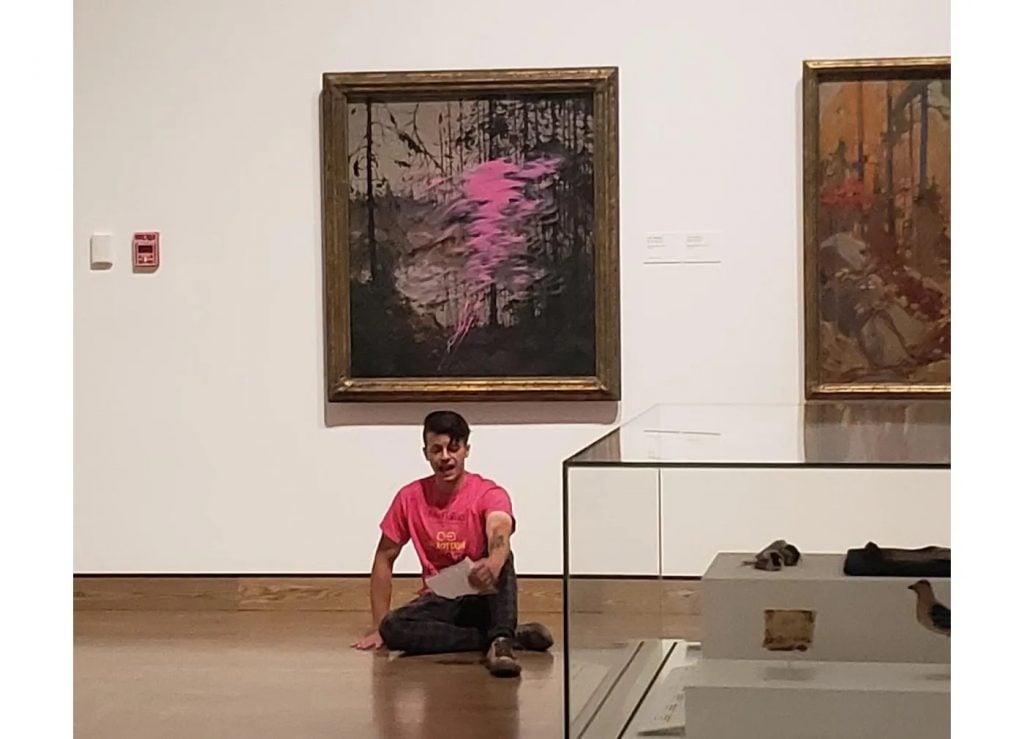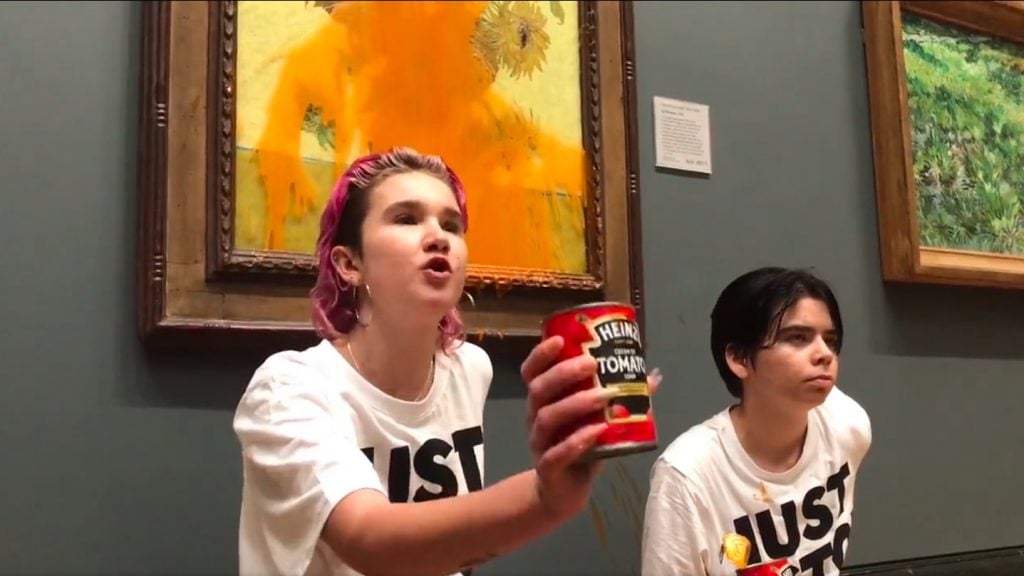Museums & Institutions
A Climate Activist Slathered Pink Paint Over a Painting at the National Gallery of Canada, Then Glued Himself to the Floor
The police arrested the activist, who used washable paint.

The police arrested the activist, who used washable paint.

Sarah Cascone

Climate activists have once again targeted a famous work of art, with a member of the group On2Ottawa throwing pink paint on Tom Thomson’s Northern River (1915) at the National Gallery of Canada in Ottawa and affixing himself to the museum floor on Tuesday.
“Fortunately, the artwork was not harmed during the incident,” the institution said in a statement. “The work was displayed in a protective glazed panel and has been taken out from display for further evaluation. We expect it will be rehung shortly.”
The protestor, who has been identified as, Kaleb Suedfeld, aged 28, smeared the paint across the glass with his palm before applying glue to his hand, sitting down, and reading a prepared speech.
“Fossil fuel industries are destroying the work of art that is our planet and our government is firmly in their grip, doing nothing to stop their crimes,” Suedfeld said. “We are shocked that the governments around the world, including our own, are allowing our beautiful planet, this work of art, to be gutted and burned to fuel the pockets of fossil fuel plutocrats.”
The museum called Ottawa Police Service to the scene, and they arrested Suedfeld.
On2Ottawa describes itself as “a non-violent civil disobedience campaign” aimed at prompting government officials “to take urgent and meaningful action on the climate crisis.” In response to Canada’s record-setting wildfires, which since March have affected all 13 provinces and territories, it has staged numerous protests in recent weeks blocking traffic in Ottawa.
Targeting works of art is a tactic denounced by many art-world authorities, including the Association of Art Museum Directors, which in November insisted that “attacks on works of art cannot be justified, whether the motivations are political, religious, or cultural… Such protests are misdirected, and the ends do not justify the means.”
But some activists maintain that such disruptive activities are as necessary due to their ability to attract widespread media attention, as opposed to petitions or direct outreach to public officials.
“That does not get the coverage that we absolutely need to succeed as a project,” On2Ottawa spokesperson Laura Sullivan told ARTnews, noting that the pink paint tossed at the Thomson painting was washable. To date, 12 members of the activist group have been arrested at protests, which are set to continue over the next week and a half.
The National Gallery called the incident “unfortunate,” but declined to comment further due to the ongoing police investigation.

Phoebe Plummer and Anna Holland from Just Stop Oil addressing the public after throwing tomato soup on Vincent Van Gogh’s Vase with Fifteen Sunflowers (1888). Screenshot from @damiengayle.
The first art museum climate protest was at the Louvre in Paris in May 2022, where a man smeared cake on the glass protecting Leonardo da Vinci’s Mona Lisa. A campaign launched by Just Stop Oil roughly a month later saw activists target high-profile paintings including works by Vincent van Gogh and J.M.W. Turner at a quartet of U.K. museums.
From there, the floodgates opened, triggering copycat actions at institutions across Europe and beyond that continue to this day, despite concerns about potential damage to the works and widespread criticism of the trend.